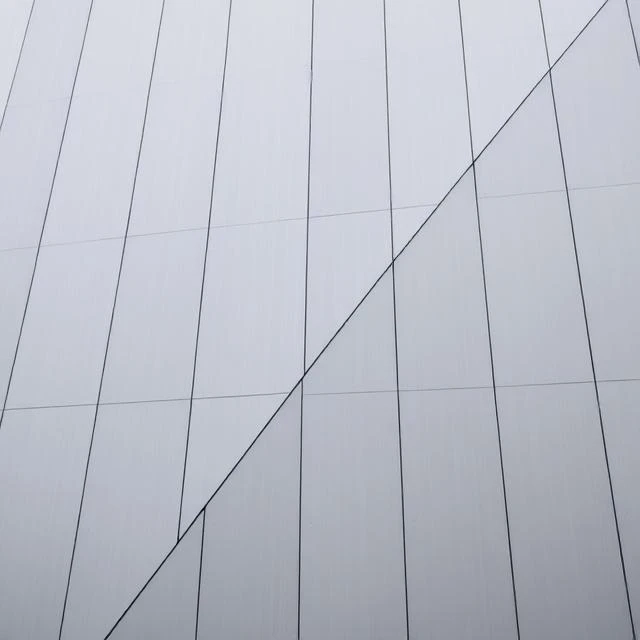In modern construction, fire safety is a top priority—especially for high-rise buildings where evacuation is complex and fire hazards can be catastrophic. Among the many materials used to enhance the safety and aesthetics of tall structures, aluminium cladding panels have emerged as a critical component. Not only do they improve architectural appeal and insulation, but when properly engineered, they also contribute significantly to fire resistance.
Understanding Aluminium Cladding Panels
Aluminium cladding panels are lightweight, durable, and versatile construction materials typically used to cover the external walls of buildings. These panels are made by sandwiching a non-combustible core between two layers of aluminium sheets. Depending on the core material—mineral-filled, honeycomb, or fire-retardant polymers—these panels can offer varying degrees of fire resistance. The outer aluminium cladding sheet provides weather protection and design flexibility, while the inner core plays a crucial role in managing heat and fire spread.
Fire Risks in High-Rise Buildings
High-rise structures are inherently at greater risk during a fire due to their height and the number of occupants. Factors such as delayed evacuation, limited access for fire response, and vertical fire spread increase the potential danger. That’s where façade materials like aluminium cladding panels come into play. By selecting fire-rated and compliant materials, architects and builders can significantly reduce these risks.
The Role of Aluminium Cladding in Fire Safety
The primary advantage of using aluminium cladding sheet in high-rise construction lies in its ability to withstand high temperatures and slow down fire progression. Unlike wood or other combustible materials, aluminium does not ignite easily. Moreover, when combined with a non-combustible core such as mineral wool or a fire-retardant polymer, the entire cladding system can achieve impressive fire ratings.
- Fire-Resistant Core Composition
- The core of the cladding panel is the most critical element when it comes to fire safety. Panels with a mineral-filled core are specifically designed to resist combustion and limit smoke generation. This dramatically reduces the chance of fire spreading through the building’s façade—a common concern in many high-rise fires.
- Thermal Break and Insulation
- High-rise buildings are exposed to external temperature variations and potential thermal bridges. Aluminium cladding panels provide a thermal barrier that not only enhances energy efficiency but also delays the transfer of heat in case of fire. This feature gives occupants more time to evacuate safely and helps firefighters control the situation more effectively.
- Reduction of Vertical Fire Spread
- A major concern in high-rises is the chimney effect, where fire rapidly moves upward through the façade system. Cladding systems that meet rigorous fire safety codes include features like fire-stopping barriers and compartmentalized installation methods. These elements prevent vertical fire spread by containing the fire within limited sections of the exterior wall.
Code Compliance and Safety Standards
To be effective in high-rise applications, aluminium cladding panels must meet stringent fire safety standards set by building codes and regulatory bodies. Many countries now require the use of panels with a certified non-combustible or limited combustibility rating. Testing procedures include flame spread, heat release, smoke production, and structural integrity under fire exposure.
Furthermore, installing systems that have passed full-scale fire tests like the NFPA 285 or BS 8414 ensures that the entire façade behaves predictably in real fire conditions—not just individual components. When sourcing an aluminium cladding sheet, it’s important for developers to verify that the product complies with national and international fire regulations.
Real-World Applications and Case Studies
In recent years, many modern high-rises have adopted fire-rated aluminium cladding panels as part of their building envelope design. These systems have not only passed fire testing but have proven effective in actual fire incidents, where damage was contained and casualties avoided due to timely containment.
For example, several commercial towers and residential buildings in the Middle East and Europe have been retrofitted with advanced cladding systems after tragic events revealed the importance of non-combustible façade materials. In each case, the new aluminium cladding sheet systems provided better thermal performance and significantly improved fire resistance.
Design with Safety in Mind
Incorporating fire-safe materials like aluminium cladding panels does not mean compromising on design. On the contrary, they offer a sleek, modern appearance with endless color and texture options. Architects can create bold and futuristic designs while meeting the highest fire safety requirements—a perfect balance of function and form.
Moreover, modern installation systems make it easy to include fire-stopping measures and to combine aluminium cladding sheet materials with other safe and sustainable components.
Conclusion
In high-rise construction, fire safety is not just an option—it’s a necessity. The strategic use of aluminium cladding panels, especially those designed with non-combustible cores and compliant with global fire standards, plays a pivotal role in enhancing the safety of tall buildings. From reducing fire spread to improving thermal resistance, the benefits of using an aluminium cladding sheet extend well beyond aesthetics. For architects, builders, and developers committed to creating safe, sustainable, and visually appealing high-rises, fire-rated aluminium cladding is an essential choice.


